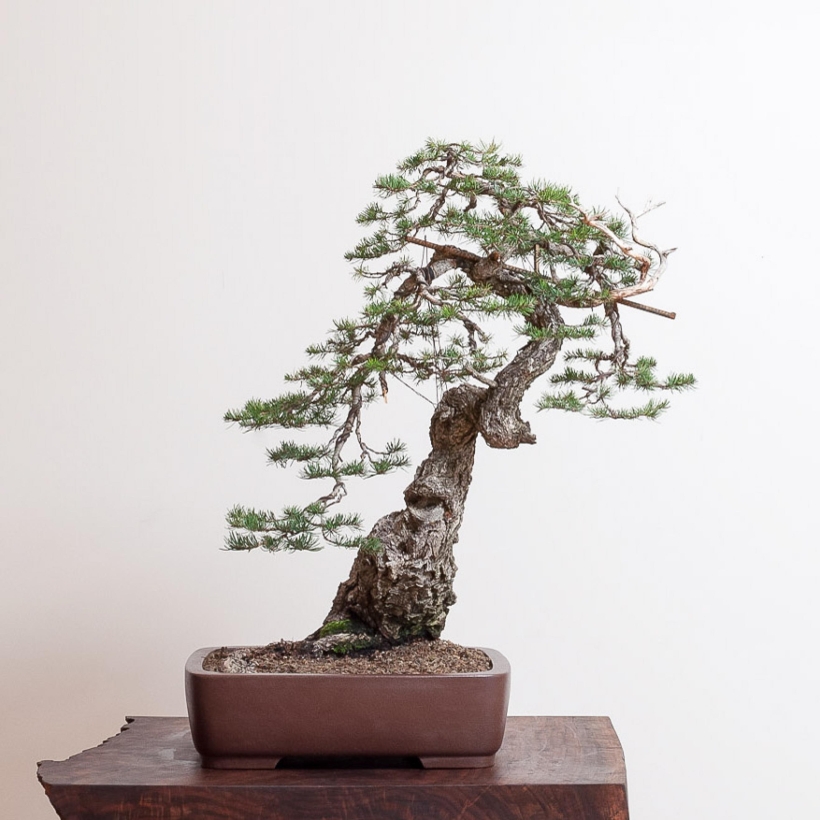The Douglas Fir Bonsai Tree is a stunning miniature tree. It is popular among bonsai enthusiasts. This guide will help you care for your Douglas Fir Bonsai.
What is a Douglas Fir Bonsai Tree?
A Douglas Fir Bonsai Tree is a mini version of the large Douglas Fir tree. It is known for its beauty and elegance. The tree has a conical shape and needle-like leaves.
History of Douglas Fir Bonsai
Bonsai originated in China and Japan. The practice of bonsai involves growing small trees in containers. Douglas Fir Bonsai Trees have become popular worldwide.
Why Choose a Douglas Fir Bonsai Tree?
Douglas Fir Bonsai Trees are unique and beautiful. They add elegance to any space. They are also a rewarding challenge for bonsai enthusiasts.
How to Care for a Douglas Fir Bonsai Tree
Caring for a Douglas Fir Bonsai Tree requires attention. Here are some key points to consider:
1. Location
Place your bonsai in a bright spot. It needs plenty of sunlight. A south-facing window is ideal.
2. Watering
Water your bonsai regularly. The soil should be moist but not soggy. Avoid overwatering as it can cause root rot.
3. Soil
Use well-draining soil. Bonsai soil mix is available in stores. You can also make your own mix.
4. Fertilizing
Fertilize your bonsai during the growing season. Use a balanced bonsai fertilizer. Follow the instructions on the package.
5. Pruning
Prune your bonsai to maintain its shape. Remove dead or damaged branches. Use sharp, clean tools.
6. Repotting
Repot your bonsai every 2-3 years. This helps the roots grow well. Use fresh soil when repotting.
Pruning Your Douglas Fir Bonsai
Pruning is essential for bonsai care. It keeps the tree healthy and well-shaped. Here are some tips for pruning:
- Prune in late winter or early spring.
- Use clean, sharp tools to avoid damage.
- Remove any dead or diseased branches.
- Trim back new growth to maintain shape.
Styling Your Douglas Fir Bonsai
Styling your bonsai is an art. It requires patience and creativity. Here are some common styles:
| Style | Description |
|---|---|
| Formal Upright | Tree grows straight up with a symmetrical shape. |
| Informal Upright | Tree has a natural, slightly curved shape. |
| Slanting | Tree grows at an angle, as if blown by the wind. |
| Cascade | Tree grows downward, mimicking a waterfall. |
| Semi-Cascade | Tree grows partially downward, not reaching the pot’s base. |
Common Problems and Solutions
Even with the best care, problems can arise. Here are some common issues and solutions:
1. Yellowing Needles
Yellow needles can indicate overwatering. Check the soil moisture. Allow the soil to dry out slightly before watering again.
2. Needle Drop
Needle drop can be caused by stress. Ensure your bonsai gets enough light. Avoid sudden changes in temperature.
3. Pests
Common pests include aphids and spider mites. Inspect your bonsai regularly. Use insecticidal soap if needed.

Credit: bonsaimirai.com

Credit: www.reddit.com
FAQs About Douglas Fir Bonsai Tree
Here are some frequently asked questions about Douglas Fir Bonsai Trees:
Q: How Often Should I Water My Douglas Fir Bonsai?
A: Water when the topsoil feels dry. Avoid letting the soil dry out completely.
Q: Can I Keep My Douglas Fir Bonsai Indoors?
A: Yes, but ensure it gets plenty of sunlight. A south-facing window is best.
Q: When Is The Best Time To Prune My Bonsai?
A: Prune in late winter or early spring. This is when the tree is dormant.
Q: How Do I Know If My Bonsai Needs Repotting?
A: Check the roots. If they are circling the pot, it’s time to repot.
Conclusion
The Douglas Fir Bonsai Tree is a beautiful addition to any home. With proper care, it will thrive and grow. Follow this guide to keep your bonsai healthy and happy.

